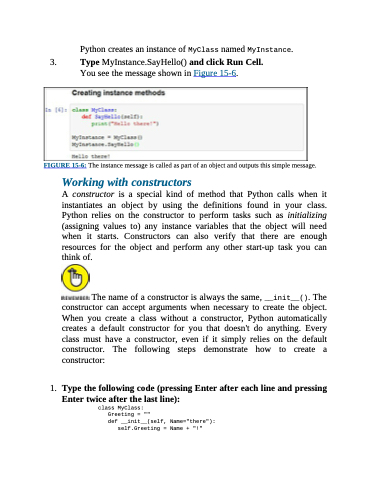Page 346 - Beginning Programming with Pyth - John Paul Mueller
P. 346
Python creates an instance of MyClass named MyInstance. 3. Type MyInstance.SayHello() and click Run Cell.
You see the message shown in Figure 15-6.
FIGURE 15-6: The instance message is called as part of an object and outputs this simple message.
Working with constructors
A constructor is a special kind of method that Python calls when it instantiates an object by using the definitions found in your class. Python relies on the constructor to perform tasks such as initializing (assigning values to) any instance variables that the object will need when it starts. Constructors can also verify that there are enough resources for the object and perform any other start-up task you can think of.
The name of a constructor is always the same, __init__(). The constructor can accept arguments when necessary to create the object. When you create a class without a constructor, Python automatically creates a default constructor for you that doesn't do anything. Every class must have a constructor, even if it simply relies on the default constructor. The following steps demonstrate how to create a constructor:
1. Type the following code (pressing Enter after each line and pressing
Enter twice after the last line):
class MyClass:
Greeting = ""
def __init__(self, Name="there"):
self.Greeting = Name + "!"


